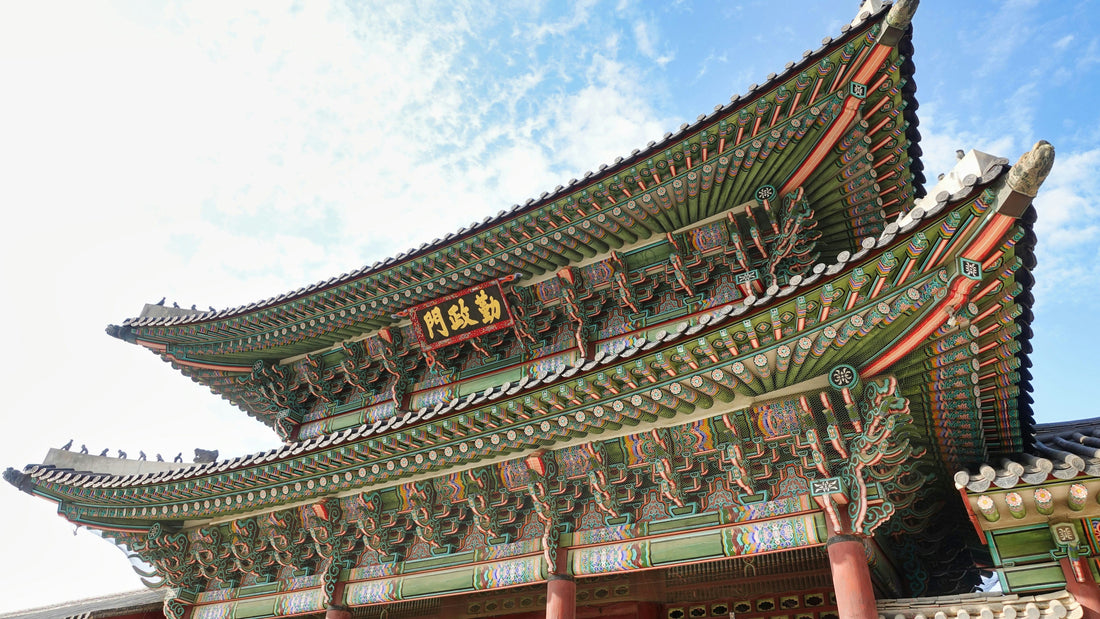
5 Fall Festivals in Korea Worth Experiencing Every Year
Daebak InternsWhen the humid summer fades and cool breezes sweep across Korea, autumn brings more than just colorful leaves. It’s a season of tradition, celebration, and cultural pride. From family gatherings to lantern-lit rivers, fall festivals in Korea are both timeless and deeply rooted in history. These aren’t one-off eventsthey happen every year, offering anyone a chance to experience the depth of Korean culture.
Whether you’re a traveler planning a trip or a fan exploring Korean traditions from afar, here are five fall festivals that never lose their significance.

1. Chuseok (추석) - Korean Thanksgiving
When: 15th day of the 8th lunar month (usually late September or early October)
Where: Nationwide
Chuseok is one of Korea’s most important holidays, often compared to Thanksgiving. Families gather to honor their ancestors, share food, and celebrate the harvest. Traditional rituals called charye involve preparing a table with seasonal fruits, rice cakes, and freshly harvested crops.
The most iconic Chuseok food is songpyeon,half-moon-shaped rice cakes filled with sesame seeds, beans, or chestnuts, then steamed over pine needles. Making them together as a family is part of the joy.
Why it matters: No matter how Korea modernizes, the rhythm of the lunar calendar keeps Chuseok alive. Every year, millions of people travel home, dress in hanbok, and bow to elders, keeping Confucian traditions at the center of family life.
If you want to get a taste of this holiday at home, you can try authentic Korean snacks and seasonal favorites with the CJ IS DAEBAK Box.
2. Andong Mask Dance Festival (안동국제탈춤페스티벌)
When: Late September to early October
Where: Andong, Gyeongsangbuk-do
Andong is known as the cultural heart of Korea, and its annual mask dance festival brings this heritage to life. The centerpiece is talchum, a traditional mask dance drama that dates back over 800 years. The performances mix satire, humor, and social commentary, often poking fun at aristocrats or corrupt monks.
Visitors can join workshops to make their own masks, explore the UNESCO-recognized Hahoe Folk Village, and enjoy parades of dancers in colorful costumes.
Why it matters: Themes of humor, resistance, and human folly never lose relevance. Every year, new audiences discover how art and satire have been part of Korea’s cultural DNA for centuries.
3. Jinju Namgang Lantern Festival (진주남강유등축제)
When: October
Where: Jinju, Gyeongsangnam-do
During this breathtaking festival, thousands of lanterns float down the Namgang River, illuminating the night with warm light. The tradition began during the 16th-century Imjin War, when soldiers lit lanterns to send military signals. Today, it’s a symbol of remembrance and hope.
Visitors can see massive lantern installations shaped like animals, mythological figures, and cultural icons. Writing wishes on a lantern and setting it afloat is one of the highlights of the festival.
Why it matters: Lanterns are universal symbols of peace and renewal. Whether you’re a history lover or simply drawn to the beauty of light against water, the festival offers timeless inspiration.
4. Gwangju World Kimchi Festival (광주세계김치축제)
When: October
Where: Gwangju, Jeollanam-do
Fall in Korea is gimjang seasonthe time when families gather to make large batches of kimchi to last through the winter. In Gwangju, this tradition has turned into a lively international festival.
The event includes kimchi-making demonstrations, hands-on workshops, cooking competitions, and tastings of endless kimchi varieties. For locals, it’s a reminder of how food preserves family bonds. For visitors, it’s a crash course in Korea’s most famous dish.

Why it matters: Kimchi is more than foodit’s UNESCO Intangible Cultural Heritage. Its health benefits, variety, and symbolism of community mean this festival is always worth highlighting, no matter the year.
Can’t make it to Korea? You can still explore Korean flavors by ordering the YOUUS IS DAEBAK Box, filled with snacks and goodies straight from Korea.
5. Jeonju Bibimbap Festival (전주비빔밥축제)
When: October
Where: Jeonju, Jeollabuk-do
Jeonju is the birthplace of bibimbap, one of Korea’s most iconic dishes. Every fall, the city celebrates with a festival full of cooking shows, cultural performances, andof coursea giant bibimbap bowl prepared for the crowd.

Visitors can also explore Jeonju Hanok Village, where traditional houses, teahouses, and workshops bring Korean heritage to life.
Why it matters: Bibimbap is all about harmonyrice, vegetables, and sauces mixed into a balanced whole. It’s a perfect metaphor for Korea’s blend of tradition and modernity, and one that resonates year after year.
Why Fall Festivals Endure
They repeat annually: Unlike concerts or one-off exhibitions, these festivals are tied to the lunar calendar, seasonal rhythms, or local heritage.
They celebrate timeless values: Family, gratitude, remembrance, food, and lightuniversal themes that never expire.
They’re globally relatable: Whether you attend in person or learn from afar, these festivals connect people across cultures.
Conclusion: Experiencing Korea Through Its Festivals
Korean fall festivals are more than tourist attractionsthey are living traditions that reflect the heart of the culture. From bowing to ancestors at Chuseok to floating lanterns in Jinju, each festival tells a story of resilience, gratitude, and togetherness.
For fans of Hallyu, diving into these traditions adds depth to the music, dramas, and trends you already love. They show that Korean culture isn’t just consumedit’s celebrated, shared, and passed down.
So whether you’re planning a future trip or simply want to connect more deeply from home, remember: fall in Korea isn’t just about leaves. It’s about festivals that light the night, fill the table, and keep traditions aliveyear after year.

